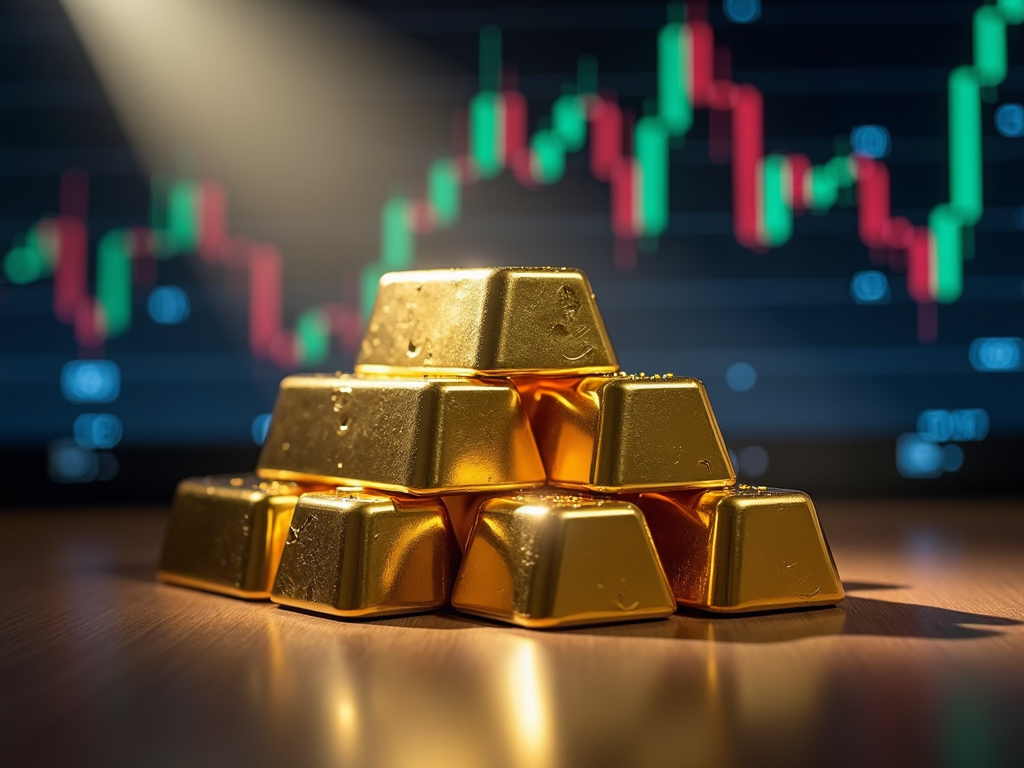In times of economic uncertainty, investors seek a safe haven for their capital. Gold, with its long history of value stability, offers just that. However, although it promises stability, the risks should not be underestimated. This article highlights the opportunities and challenges of investing in gold, demonstrating how it functions as a crisis currency and providing insights into various investment possibilities. Each chapter contributes to developing a comprehensive understanding of gold’s role in turbulent times.
Gold as an Anchor in Turbulent Times: Stability and Protection at the Forefront

In times of economic uncertainty, investors often seek a safe harbor to protect their wealth. Over the centuries, gold has established itself as a proven means and offers stability amidst financial crises and geopolitical tensions. The historical ability of gold to maintain its value, even when fiat currencies are under pressure, is well documented. Examples such as hyperinflation in the Weimar Republic or the currency crises in Zimbabwe and Venezuela demonstrate that gold acts as a hedge against currency devaluation and preserves its purchasing power.
A key advantage of gold is its protection against inflation. While the purchasing power of many fiat currencies decreases during inflationary periods, gold often increases in value. This characteristic makes it a solid alternative during times of rising prices. It not only preserves purchasing power but also protects wealth from the slow erosion caused by inflation.
Moreover, gold as part of an investment portfolio offers excellent diversification opportunities. Due to its low correlation with other asset classes such as stocks or bonds, gold helps diversify risk and reduce portfolio volatility. This characteristic makes it particularly attractive to investors seeking a balanced distribution of their investments.
Another crucial aspect is the international acceptance of gold. As a globally recognized store of value, it can be easily exchanged in different currencies. This provides investors with flexibility, especially during times when national currencies lose influence. The ability to own and physically hold gold also offers an additional level of independence from banks and government interventions, an advantage that is invaluable during crises, such as the banking crisis in Cyprus in 2013.
However, despite these advantages of physical ownership, it is important not to underestimate the associated challenges. Physical gold requires secure storage, incurring additional costs. Yet, the independence and protection from government measures in certain scenarios might justify a greater investment in security precautions.
Gold, due to its nature as a crisis currency, remains an attractive option for investors seeking stability and protection during times of volatility. At the same time, its integration into a portfolio requires a well-thought-out strategy that considers the drawbacks and maximizes the advantages.
The Complex Aspects of Gold Investment in Times of Crisis

Gold has symbolized security in turbulent economic times for centuries. It radiates strength and offers a sense of stability that attracts many investors. But beneath the shiny surface lies a host of risks and pitfalls that must be considered.
The volatility of gold prices is a central risk that investors need to keep an eye on. Although gold is considered a safe haven, its price can experience significant fluctuations. Political tensions, changes in interest rates, and global economic developments profoundly impact the gold market. This volatility is often seen as a double-edged sword: while it offers opportunities for high gains, the risks of losses are equally high.
Another significant aspect is the currency risk. Gold is traded globally in US dollars. This exposes investors operating in other currencies to significant exchange rate risk. An appreciation of the domestic currency against the US dollar can reduce potential gains or even turn them into losses. Additionally, gold does not generate current returns such as dividends or interest, which are common in other investments. Gains can only be realized through sale, which requires strategic timing.
Storing physical gold also entails additional challenges. Secure storage is essential to avoid losses due to theft or damage. These security measures can incur significant additional costs, thus reducing the net return prospects of an investment in gold. Considering these storage costs, some investors may opt for alternative forms of investment, such as ETFs or gold certificates, which allow participation in the gold market without physically owning gold.
Finally, gold remains a complex investment that goes beyond its simple function as a crisis currency. Investors should consider it as part of a diversified strategy. A balanced portfolio that intelligently integrates gold can help minimize risks and ensure stability during turbulent times. Understanding and careful attention are essential to fully leverage the potential of gold, avoiding falling into the many pitfalls that reveal themselves with insufficient caution.